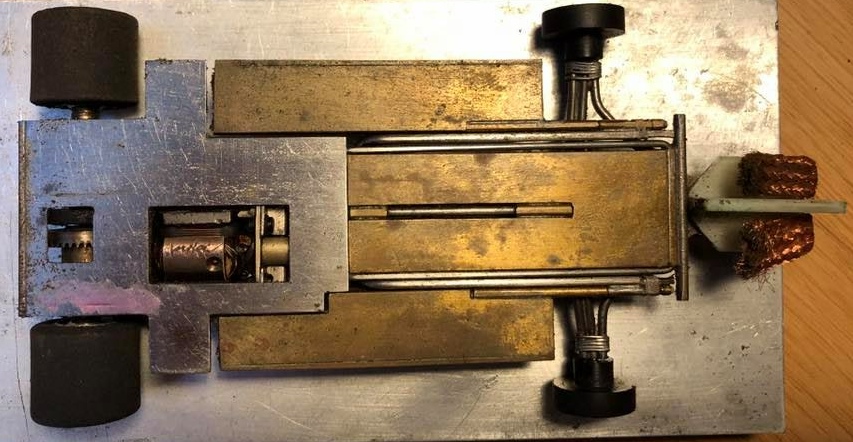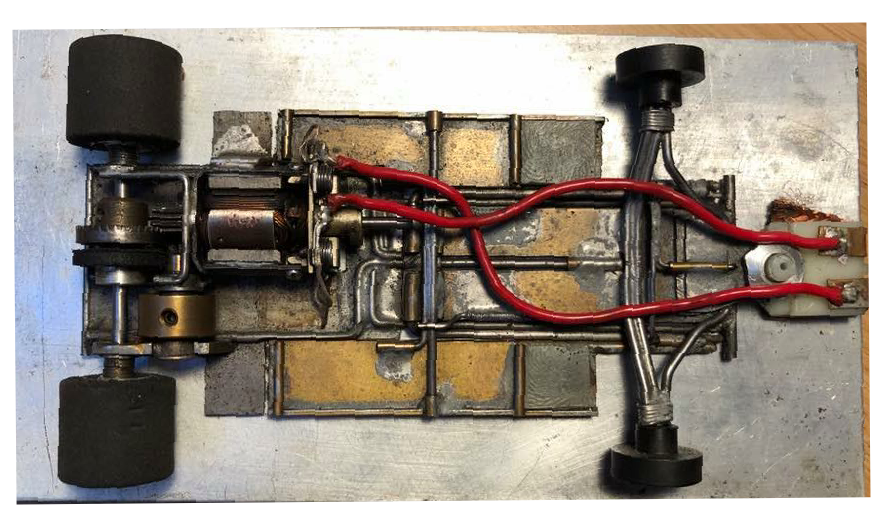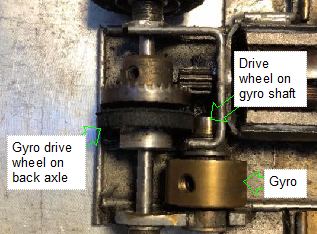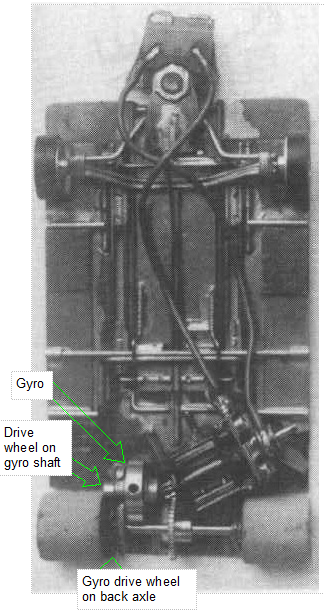
SLOT RACING HISTORY
INOVATIVE CARS
GARY FLETCHER’S GYRO CARS
In the 1990s Gary Fletcher's built cars with flywheel for extra gyroscopic effect.
Firstly let’s look at the sports car that won the Constructors trophy at the 1990 Nationals.
From the motor forward this is a fairly conventional 1/32 sports car of the period. The strap motor is mounted to right of centre and at a rather larger angle than normal to clear the rear tyre. The motor drives the back axle though a spur gear in the normal way, although the gear is almost central in the chassis. The brass gyro is mounted to the left of the motor. There is a gyro drive wheel mounted on the back axle. As can be seen in the photo the gyro drive wheel on the axle is much larger diameter than the drive wheel on the flywheel. This means the flywheel this rotates in the opposite direction to the rear wheels at much higher revs. The gyro dive depends on friction drive, not gears.
The gyroscopic effect of an armature in a conventional sidewinder or anglewinder tries to stop the car tipping over in corners. The gyro car produces larger forces trying to stop the car tipping due to the additional flywheel rotating at high revs in the same direction as a sidewinder armature. The effect on the chassis in cornering is rather similar to lowering the centre of gravity.
Inline motors are mandatory in F1. An armature in that position doesn’t produce any gyroscopic forces trying to stop the car tipping over in corners. That could make a separate gyro a greater advantage in F1 than in anglewinders. Thanks to Gary for the photos of his gyro F1.
Gary also tried the gyro flywheel idea in a F1. Thanks to Gary for his recent photos of the chassis .
Copyright © 2021 British Slot Car Racing Association , colour photos copyright G.Fletcher 2020, b&w photo copyright BSCRA 1990, All rights reserved



The close up shows the back axle gyro drive wheel has a rubber outer face. This is intended to expand slightly as the revs increase giving increased pressure against the drive wheel on the gyro shaft. The idea is to disengage the drive as the car brakes for a corner thus leaving the gyro spinning faster in a corner. That would increase the gyro effect.
Gary said the car was better in corners than a conventional F1 -
The gyroscopic forces from this flywheel can be calculated assuming the drive is fully engaged, they’d be larger if the gyro was freewheeling at higher speed. The estimated forces are higher than the gyro forces from a typical early 1990s sports car armature, but less than produced by the armatures in today’s sports cars (because they are geared to rev so much faster).
Might gyro cars be seen in racing again one day? Maybe, it invariably takes lots of development as well as a good concept to make successful racing machinery.
Chris Frost
